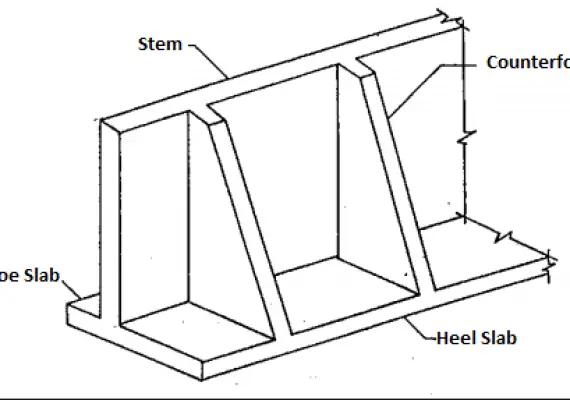What Is Meant By Shallow Foundation?
What Is Meant By Shallow Foundation?
A shallow foundation is a type of civil engineering structure which transfers the load from the superstructure to the ground through direct contact with a small area of soil or rock.
It can also be referred to as spread, strip or pad foundations and consists of a comparatively thin layer of material (concrete, asphalt, stone etc.) resting on top of an isolated footing which spreads the weight over a large area.
Shallow foundations are typically used when the load-bearing capacity of the soil is sufficient to support and distribute the weight without having to go deeper into the ground.
What Are The Two 2 Types Of Shallow Foundation?
Shallow foundations are the most common type of foundation and are typically used for small to medium-sized buildings.
They consist of a shallow, continuous base that transfers the building’s load directly to the soil or rock underlying the surface. Shallow foundations are divided into two primary types: strip footings and spread footings.
- Strip footings involve long, narrow supports that run along the entire length of a building, typically underneath walls.
- Spread footings involve individual pads or columns that are spread out around a structure in order to evenly distribute weight.
Both types of shallow foundations can provide adequate support for many different kinds of structures; however, it is important to choose a footing type carefully based on the expected loads and soil conditions.
Why Is Shallow Foundation Used?
Shallow foundations, also known as spread footings or open footings, are commonly used in smaller-scale projects where load requirements are minimal.
These foundations are more economical to build and less labor intensive because they don’t require extensive excavations or underpinning of existing structures.
Shallow foundations can be used on almost any soil type but may be most suitable for hard rocks such as limestone and shale that support high loads while remaining stable over time.
They can be constructed quickly and with little disruption to the surface soil, making them an ideal option for shallow foundation applications.
What Is Difference Between Shallow And Deep Foundation?
Shallow foundations are used when the loads imposed by a structure are spread out over a wide area, whereas deep foundations are used when soil at shallow depths is too weak or unstable to support the load.
Shallow foundations, such as strip or spread footings, involve excavating only to a shallow depth and then distributing the weight of the structure over a large area.
Deep foundations (which can be pile, pier/caisson, drilled shafts) involve deeper excavations into stronger subsurface material, such as bedrock or dense soil layers.
As this strong material can take more pressure from the loaded structure than soil at shallow depths can, deep foundations offer better stability and strength.
What Is Shallow Foundation Ratio?
A shallow foundation ratio is the ratio between the width of a shallow foundation and its depth. It is usually expressed as an inverse ratio, with the width being divided by the depth.
This ratio is important to consider when designing a foundation as it affects factors such as soil bearing capacity and settlement behavior.
Shallow foundations can be categorized into three groups depending on the value of their ratio: wide shallow foundations (ratio greater than 4), medium shallow foundations (ratio between 2 and 4), and narrow shallow foundations (ratio less than 2). The size of a foundation must be carefully chosen to ensure it will suitably support the structure for which it has been designed.
How Deep Is Shallow Foundation?
Shallow foundations, also known as spread footings or open footings, are one of the most commonly used foundation systems in shallow soils. They consist of a single pad or continuous strip of concrete that transfers structural loads to the soil.
Shallow foundations are typically around 3m in depth and are used when the soil is strong enough to resist lateral loads without requiring additional reinforcement.
A variety of factors such as soil bearing capacity, seismic loading conditions, water table conditions, and settlement requirements will dictate how deep a shallow foundation should be.
In general, the deeper the foundation is constructed, the more capable it is at resisting overturning forces within the structure due to its higher moment arm capability.
Which Soil Is Best For Shallow Foundation?
The best soil for shallow foundations is a dense, well-drained loam soil. This type of soil should consist of little to no organic matter, be firm enough to resist rutting and settling, and offer a solid bearing capacity for foundation support.
A dense, well-drained soil can also reduce moisture penetration into the foundation, which can cause cracks and add additional lateral loads over time.
Conducting site surveys with a professional engineer before construction is the best method to determine if the existing soil will provide adequate stability for a shallow foundation.

